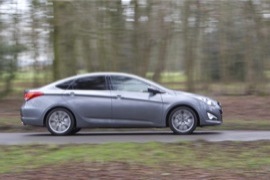HYUNDAI i40 Models/Series Timeline, Specifications & Photos
First production year: 2011
Engines: Gasoline, Diesel
Hyundai introduced the i40 Sedan at the 2011 Barcelona Motor Show, and it was the beginning of a new era for the carmaker: it entered in direct competition with the European mid-size sedans.
While the Sonata range was uncertain where it stood on the market, the i40 aimed directly at the Ford Mondeo, Renault Laguna, or even Volkswagen Passat. Compared to its predecessor, the i40 targeted the younger generations thanks to its styling and features. It also switched toward a sporty-sedan segment.
Hyundai threw away its older folders with design ideas and adopted a completely new language. Its sharp design, with a narrow front end and big, swept-back headlights, looked fresh and young. The old styles with boring lines from the Sonata were gone. Its ascending beltline and sculptured door panels were closer to Mazda's style. Its arched roofline and sloped rear window made the car looks like a sport sedan, not just another three-box vehicle.
Inside, the carmaker installed a cockpit-like driving post with a tall center console and a tilted center stack. Depending on the trim level and options, an infotainment system with a touch-screen display took most of the dashboard center area. The front bucket-seats were wide enough to offer good comfort on long roads. There was enough legroom but limited headroom for the rear passengers if they were above the average height.
Under the hood, Hyundai installed a choice of two gasoline and one turbo-diesel engine. The latter was offered in two power outputs. They were paired as standard to a 6-speed manual, but a 6-speed automatic was on the options list. One key advantage over some of its competitors was the independent suspension in all corners.
